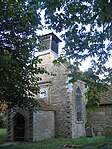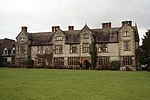Wilmcote
AC with 0 elementsVillages in Warwickshire

Wilmcote is a village, and since 2004 a separate civil parish, in the English county of Warwickshire, about 3 miles (5 km) north of Stratford-upon-Avon. Prior to 2004, it was part of the same parish as Aston Cantlow, and the 2001 population for the whole area was 1,670, reducing to 1,229 at the 2011 Census.It has a church, a primary school, a village hall, a village club, one small hotel, a shop and a pub. Visitors are attracted to Mary Arden's Farm, the home of Shakespeare's mother.
Excerpt from the Wikipedia article Wilmcote (License: CC BY-SA 3.0, Authors, Images).Wilmcote
Aston Cantlow Road, Stratford-on-Avon
Geographical coordinates (GPS) Address Nearby Places Show on map
Geographical coordinates (GPS)
| Latitude | Longitude |
|---|---|
| N 52.221 ° | E -1.762 ° |
Address
Mary Arden's House
Aston Cantlow Road
B95 6JS Stratford-on-Avon
England, United Kingdom
Open on Google Maps








